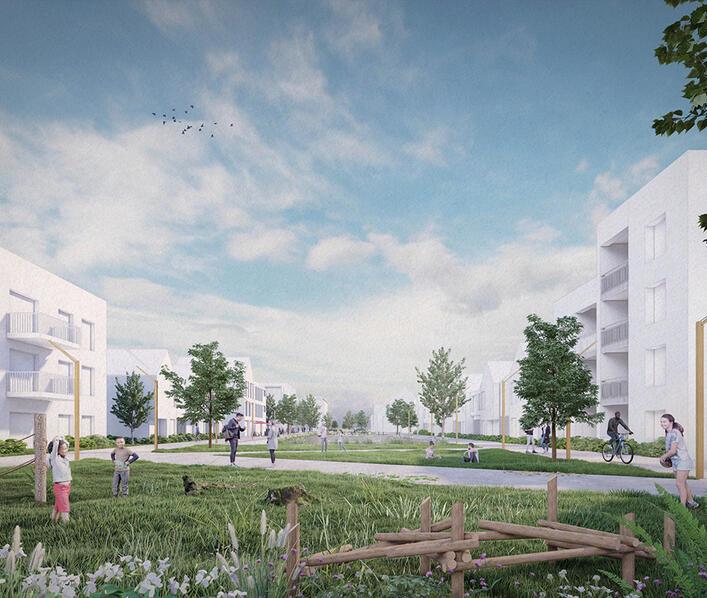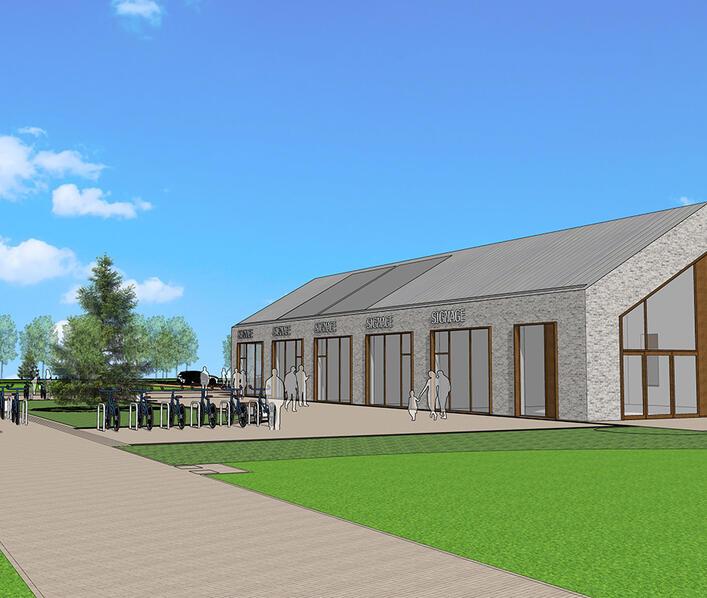Walking in Roman Footprints
- 19.06.2013

A field walk has helped to provide further evidence of Alconbury Weald’s past history when an enthusiastic group of 25 amateur archaeologists were guided on a field walking exercise.
Organised by The Stukeleys Heritage Group and funded by Alconbury Weald owners and developers Urban&Civic, the aim of the field walk - which was held across land off Owl End in Great Stukeley - was to find and identify pottery and other artefacts located on a small field close to Ermine Street, the Roman road which was a major Roman supply route between London (Londinium) and Lincoln (Lindum Colonia).
On a sunny Saturday in May, and following instruction from professional archaeologists James Fairbairn and Rob Atkins from Oxford Archaeology East the group walked in pre-set straight lines across the field scanning the ground for anything unusual. Luck was with them and, in total, 25kg of pottery and metalwork was collected including Roman and Medieval pottery along with horse shoes and rusty nails from later periods.
Some of the finds were washed on site where they could then be identified. The most significant find of the day was a small Romano-British brooch dating from between AD43 and AD75 and known as a Hod Hill type, after the area in Dorset where they were first found. The brooch would have been used as a safety pin to hold clothing fabric together.
The remainder of the finds are currently being cleaned and identified by Oxford Archaeology who will then produce a report which will be eventually be made available to the public. The Field Walk came about after members of the Stukeleys Heritage Group approached Urban&Civic about the field which over the next few months will be turned into a community allotment and woodland for local residents.
Michael Monk, convenor of the Group, said:
“There have been a number of studies done about the older history of this area, and several of our members were interested to get out there and have a look. There was a window of opportunity with this piece of land which is about to be handed over to the Stukeleys for the community allotments, and we wanted to make use of that opportunity. Our members will continue to study the finds, and we hope to work with Urban&Civic to create a display of the finds.”
Rebecca Britton from Alconbury Weald said:
“It’s amazing to look at a field and see nothing at first and then look closer and start to see pieces of pottery and tile which each have a story to tell. It all comes to life when the experts are able to interpret the finds and share their stories.
“The history of Alconbury Weald is not all about the Cold War and as we start to capture the history of the site – to be told as part of a planned heritage area within the development - we will also capture its role during the Roman occupation and into the Middle Ages. It goes to show that its location on the cross-roads of the country made it a good place to live and do business throughout history: which is very exciting as we now look to the next stage of its development as Alconbury Enterprise Campus and Weald.”
James Fairbairn of Oxford Archaeology East said:
“Projects like Owl End are an invaluable source of information for archaeologists and the historical record. Working alongside the residents and developers who both have a real interest in the area and its history makes this a doubly rewarding experience. It would be good to see more projects like this being undertaken across the county”.
The field walkers were made up from members of the Stukeleys’ Heritage Group, the Huntingdon U3A Archaeology Group and Ramsey Archaeology Group.
Richard Halliday of Huntingdon U3A Archaeology Group said:
“Although the members of our group understood the theory and importance of field walking, and had learned something about prehistoric, Roman and medieval pottery, most of us had no experience of finding such material in the field. Before we started we had studied some maps, including the results of geophysical scans, of the area so thought that we might find Roman material and were delighted to be offered this opportunity (through Urban and Civic and the Stukeleys Heritage Group) to get the practical experience we lacked. It was quite exciting, as not only did we get some training in how these things were done but we all managed to find some pottery and had the chance to use a metal detector.”






